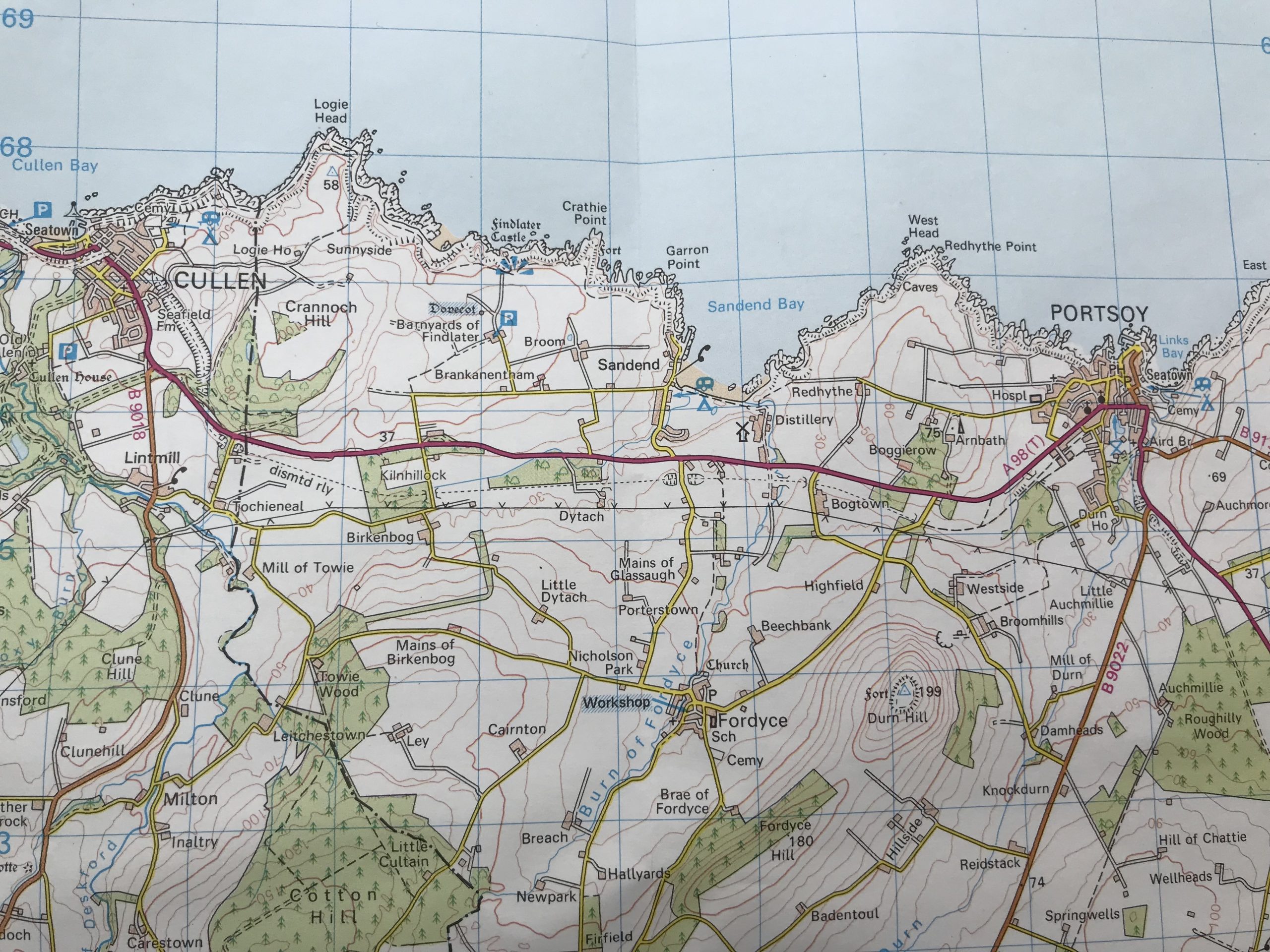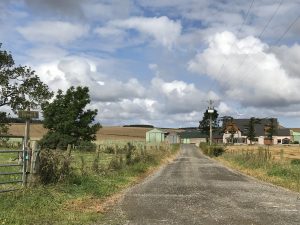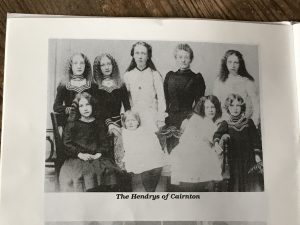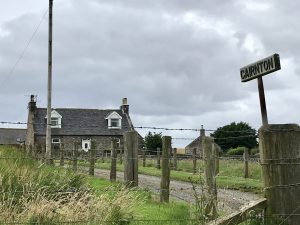
Driving on the wrong side of the one-lane roads in rural Scotland was a challenge. We were following an old English Ordnance map, looking for the elusive “Breach”, which showed up as a thinly-lettered dot in Banffshire. Was it a town, a hamlet, an existing site? All we knew was that it had appeared on some old marriage and birth records as far back I could trace my Scottish relatives, and we wanted to see it.
Was it a town, a hamlet, an existing site? All we knew was that it had appeared on some old marriage and birth records as far back I could trace my Scottish relatives, and we wanted to see it.
Maneuvering map and searching the countryside, we came upon a farmhouse set back from the road, surrounded by golden fields and a post by the gate clearly marked “Breach”. Bingo! It had been, and still was, the name of a farm, “my” farm. This was the spot from which my ancestors had migrated to other parts of Scotland and then to Canada and the US.
The small nearby town of Fordyce was full of old stone buildings, churches, streets and walls which didn’t seem to have changed much for quite a while. Its cemetery was full of stones commemorating people whose names corresponded with our genealogic research. It truly felt like stepping back in time.
The little museum wasn’t open, but the woman at the local café lent us the key to the Joiner’s Workshop, which had some local history—including a book with pictures of “the Hendrys of Cairnton”. Other old records showed that some of the family had indeed moved there, and a little more nosing about showed that Cairnton was the farm abutting Breach. We set out to explore more.
Still following the ordnance map, we found another farmhouse with a sign marked “Cairnton” and even better, a notation on the map of a cairn on a hill above the farm. Scotland is full of old standing stones and cairns, and maybe we could find this one. We drove up and down along the little lanes, trying to get close to the location and peering deeply at every little bump and outcropping that might be a cairn.
As we were parked on the side of the road, binoculars scouring the fields, a fellow drove up and asked suspiciously if we needed some help. Once we explained our quest, he had lots of information. It turned out that the cairn was there no more—it had been dynamited sometime back when evidence of a Pictish silver hoard was discovered on the hill. Alas, they never found the urn they thought might be there, but bits of silver ended up in some museum in Banff.
The helpful fellow turned out to be the current owner of Breach! No relation to me apparently, but we didn’t dig too far. He described how the whole area was basically owned by the fabulously wealthy English Seafields, who still leased the land to the farmers as they had for centuries. Today, they rule with a light hand, and those who occupy the farms own them in all but name. He allowed that the current reigning Seafield was a bit of a playboy and word was that Seafield, in fact, no longer owned Breach because he lost it on a gambling bet.
Looking across the golden fields, worthy of a Sting song, I asked what they grew. Barley, of course! For scotch whiskey. Who bought the crop from Breach? Glenfiddich, McCallen, and the Strathisla single malt in the Chivas blend. Needless to say, we got a taste of each one before we left Scotland, for auld lang syne.






Thanx for your tracing-your-roots tale Khati, but what – no haggis with your Chivas?!
We might have had some haggis, and we also had Cullen skink in Cullen. When in Rome…